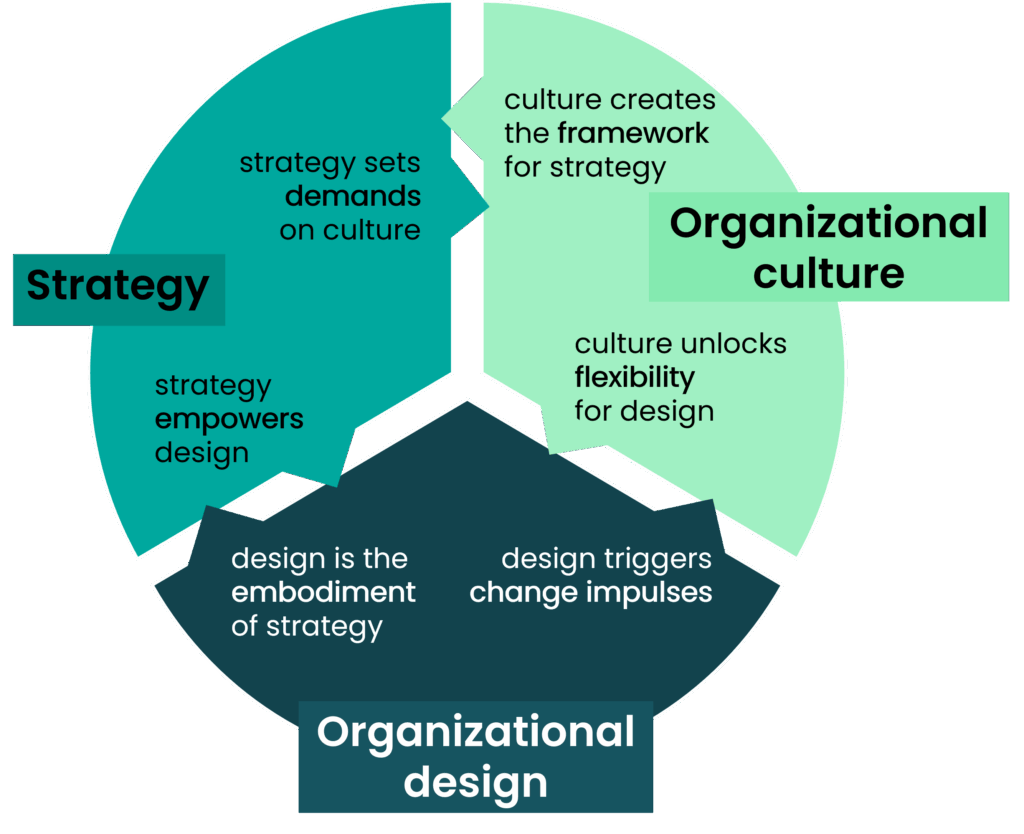Successful organizations respond to increasing external dynamics by boosting their ability to learn.
They continuously adapt their structures to meet the ever-evolving demands of their environment.
Rather than pursuing isolated change initiatives, organizational development is increasingly about building the capacity for change itself.

Principal & Partner
klein@imap-institut.de
+49 (0) 211 513 69 73 - 13
Projects
Strategy offers clarity on objectives and the necessary means to reach them.
Organizational design – the formal structure – and organizational culture – its implicit, informal counterpart – should ideally be aligned with the strategy.
In other words, roles and responsibilities, governance and processes, as well as cultural norms and everyday practices, should all support goal achievement and ensure an efficient and effective use of resources.

Three design dimensions of organizational development
When internal or external conditions make change necessary, it’s not just the strategy that needs attention — organizational design and culture must also be addressed.
And the more organizational development is aimed at transforming into a “learning organization,” the more crucial it becomes to consider all three design dimensions and how they interact with the organization’s leadership approach.
In our experience, cultural aspects are often left unaddressed in change initiatives.
This may be because organizational culture resists direct intervention, since it cannot simply be manipulated or controlled.
Working with culture requires a much more indirect approach (see Organizational Culture).
This is where we apply expertise that goes far beyond subject-matter knowledge: it is deeply rooted in methodological competence and agile process design.

IMAP's approach: organizational development based on culture
To ensure that transformation efforts do not fail, it is essential to analyze the cultural status quo and to anchor the new within the organizational culture. Only then can culture be used, within this complex process, as a vehicle for flexibility and ultimately as an enabler of the learning organization.
Organizational culture, as an informal system not governed by directives or formal rules, provides a crucial foundation for translating flexibility into practical logic — clarifying who perceives what, when, and takes which action. In this sense, together with culture of leadership, organizational culture becomes a vital reference point on the path to becoming an organization that embraces and enables change. It helps define the type, scope, and triggers of self-organization and individual responsibility as well as it influences their productivity and alignment across the organization.
Effective organizational development based on culture depends on:
Encouraging cultural self-reflection:
An organization’s ability to observe itself is a key step toward leveraging culture as a strength.
This requires dedicated spaces for reflection outside of routine and task-focused communication.
What is needed is an open, non-directed dialogue that allows fundamental questions about how people work together to be raised and discussed productively.
Strengthening leadership mindset:
Beyond command and control, a change-capable organization relies on a modern leadership approach based on trust and collaboration. In today’s digital work environment, space for flexibility and self-management is essential. This space emerges precisely where formal structural control decreases and is replaced by shared goal alignment, information exchange, cooperation, and trust.
Even when one of the three elements is the primary focus of a specific development project, IMAP takes a holistic view of the interactions between strategy, organizational design, and organizational culture for effective renewal and aligns all accompanying process measures accordingly.















































